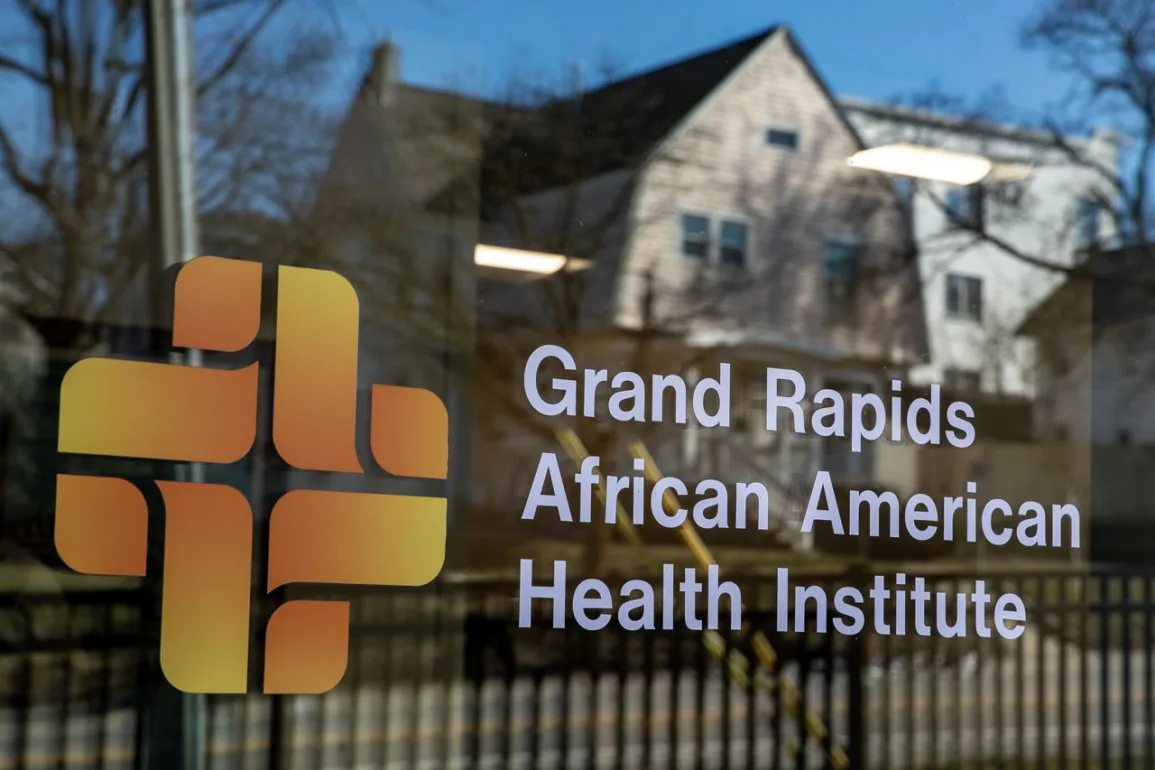
GRAND RAPIDS, MI – What started as a small group of individuals looking for solutions to improve the Black community’s quality of life has become instrumental in reducing disparities and bridging access to adequate health care.
The Grand Rapids African American Health Institute (GRAAHI) was launched a little over 20 years ago after a needs assessment reported that the Black infant mortality rate in Kent County was extremely high, exposing other issues and concerns within the marginalized and underserved population.
GRAHHI officials say the organization has implemented many programs for Blacks in the Grand Rapids area living with sickle cell disease, diabetes, hypertension, and heart disease, as well as initiatives aimed at improving the patient policies of local hospitals.
GRAAHI has been able to serve the Black population in Kent County by meeting the communities where they are, tackling the elephant in the room: mistrust in healthcare.
“We have a really great team out here rolling up our sleeves every day and doing a lot of great work in the community,” GRAHHI CEO Vanessa Greene said. “Representation matters, particularly when we have a history of mistrust in the system.”
GRAAHI, 500 Lafayette Ave. NE. Suite 018, is constantly looking at ways to improve the health of residents in area communities. Federal American Rescue Plan Act (ARPA) dollars have been helpful.
Over the last four years, officials say the organization has received $1 million ARPA funds — the first totaling $400,000 and $200,000 for the second, third and fourth years to provide support for patients with sickle cell disease.
Sickle cell is an inherited blood disorder that is marked by flawed hemoglobin, primarily affecting African Americans, according to John Hopkins Medicine. The disease interferes with the delivery of oxygen to the tissues.
Greene told MLive/The Grand Rapids Press the funds are broken down quarterly for sickle cell programs and research because it affects Black communities in a way that it doesn’t affect others.
She said nearly 400 lives have been saved through seven blood drives, focus groups and sickle cell research in partnership with churches and community organizations.
However, GRAAHI noticed that 80% of Black patients still felt their physicians didn’t listen or manage their pain crisis well.
“We’re working with the healthcare system on culture, competency and understanding what this all means for patients,” Greene said. “But it’s not just the healthcare systems either. We’re engaging systems at large, relating to affordable housing, food insecurity and inflation. Everything ultimately impacts the educational system.”
Ashlie Jones, health initiatives and community engagement manager at GRAAHI, said it’s about “finding the why” to support people in the area.
“There’s access to care, but it’s even just something as understanding what you need care for,” she said. “If I’m a community member and don’t have access to care because I don’t have a primary physician, that’s a major thing.”
For 2024, GRAAHI is continuing to help decrease painful episodes for those with sickle cell, specifically with the new Sickle-Cell Task Force comprised of all the major medical systems in the area.
The organization is developing an action plan to bring teams at local healthcare facilities together, expanding the work and the educational components so that patients feel seen and heard. Communities and hospitalization rates will be surveyed to assess behaviors that may increase or decrease sickle-cell crisis episodes, like diet and exercise resources.
“The best way to eat an elephant is one bite at a time, and that’s what we’ve been able to do over the last 20 years,” Jones said. “We haven’t eaten the entire elephant, but there’s progress.”
Patients that are anywhere from age 20 to over 60 years old have reported an improvement in their quality of life, just from attending programs aimed at restoring health or working with a health navigator to get concise answers during appointments, Jones said.
Although it will take time to dismantle the historical mistrust of healthcare for Black communities, GRAAHI leaders say they can still empower the community with resources and education for better understanding.
“It could have continued to be historically debilitating,” Jones said. “Because GRAAHI was able to position itself to undergird the community, we have not only been instrumental in helping to write what the history of the city will look like but also write the history as it pertains to what partnership looks like, what bridging the gap looks like, what developing trust equity looks like.”
One of the Grand Rapids African American Health Institute’s many initiatives the Wellness Academy, described on its website as “an exciting and comprehensive initiative offering four distinct programs aimed at promoting health and well-being.”
The free educational series grants community members access to experts to gain valuable knowledge and skills to manage their health effectively.
To learn more about the various programs offered at GRAAHI, visit the organization’s website.
Want more Grand Rapids-area news? Bookmark the local Grand Rapids news page or sign up for the free “3@3 Grand Rapids” daily newsletter.
Read more:
5 West Michigan teens named ‘Black History Makers of Tomorrow’ for giving back to their communities
VP Kamala Harris buys Miles Davis record, talks music at surprise Grand Rapids vinyl store visit
Snack maker adding 37 jobs, $30M investment south of Grand Rapids



